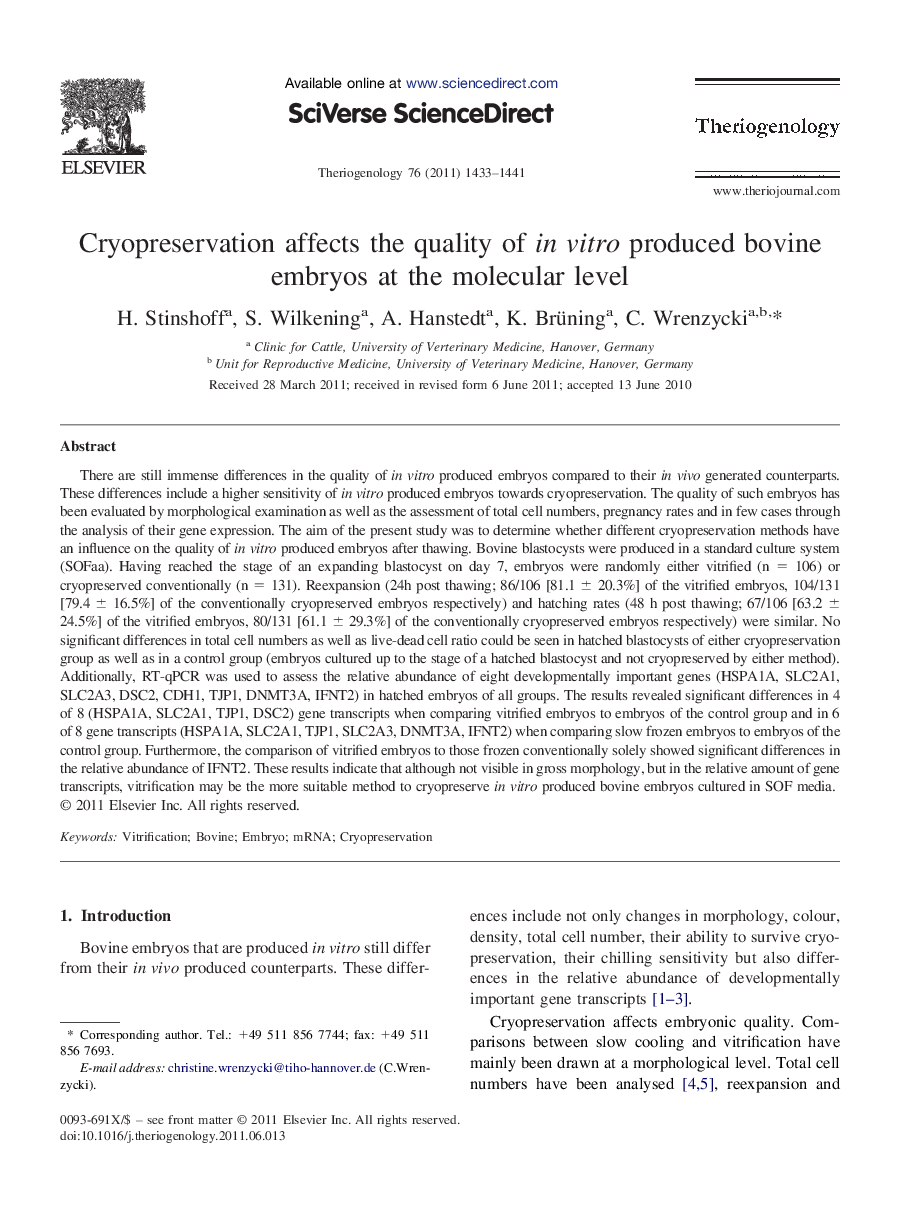| کد مقاله | کد نشریه | سال انتشار | مقاله انگلیسی | نسخه تمام متن |
|---|---|---|---|---|
| 2095388 | 1082108 | 2011 | 9 صفحه PDF | دانلود رایگان |

There are still immense differences in the quality of in vitro produced embryos compared to their in vivo generated counterparts. These differences include a higher sensitivity of in vitro produced embryos towards cryopreservation. The quality of such embryos has been evaluated by morphological examination as well as the assessment of total cell numbers, pregnancy rates and in few cases through the analysis of their gene expression. The aim of the present study was to determine whether different cryopreservation methods have an influence on the quality of in vitro produced embryos after thawing. Bovine blastocysts were produced in a standard culture system (SOFaa). Having reached the stage of an expanding blastocyst on day 7, embryos were randomly either vitrified (n = 106) or cryopreserved conventionally (n = 131). Reexpansion (24h post thawing; 86/106 [81.1 ± 20.3%] of the vitrified embryos, 104/131 [79.4 ± 16.5%] of the conventionally cryopreserved embryos respectively) and hatching rates (48 h post thawing; 67/106 [63.2 ± 24.5%] of the vitrified embryos, 80/131 [61.1 ± 29.3%] of the conventionally cryopreserved embryos respectively) were similar. No significant differences in total cell numbers as well as live-dead cell ratio could be seen in hatched blastocysts of either cryopreservation group as well as in a control group (embryos cultured up to the stage of a hatched blastocyst and not cryopreserved by either method). Additionally, RT-qPCR was used to assess the relative abundance of eight developmentally important genes (HSPA1A, SLC2A1, SLC2A3, DSC2, CDH1, TJP1, DNMT3A, IFNT2) in hatched embryos of all groups. The results revealed significant differences in 4 of 8 (HSPA1A, SLC2A1, TJP1, DSC2) gene transcripts when comparing vitrified embryos to embryos of the control group and in 6 of 8 gene transcripts (HSPA1A, SLC2A1, TJP1, SLC2A3, DNMT3A, IFNT2) when comparing slow frozen embryos to embryos of the control group. Furthermore, the comparison of vitrified embryos to those frozen conventionally solely showed significant differences in the relative abundance of IFNT2. These results indicate that although not visible in gross morphology, but in the relative amount of gene transcripts, vitrification may be the more suitable method to cryopreserve in vitro produced bovine embryos cultured in SOF media.
Journal: Theriogenology - Volume 76, Issue 8, November 2011, Pages 1433–1441